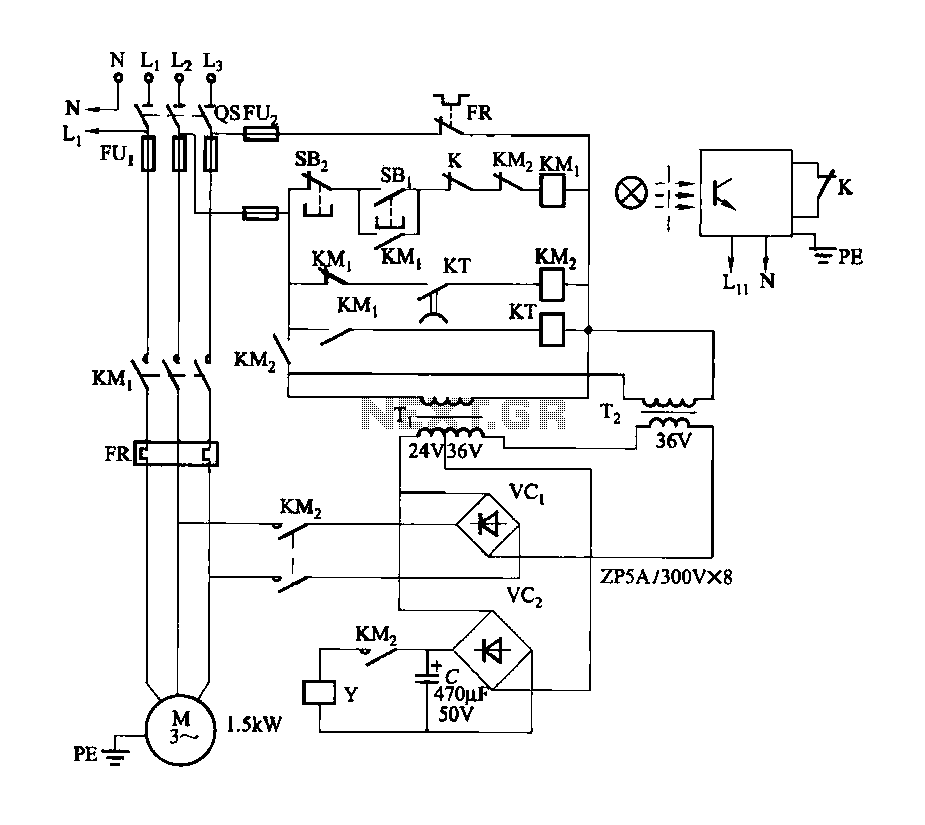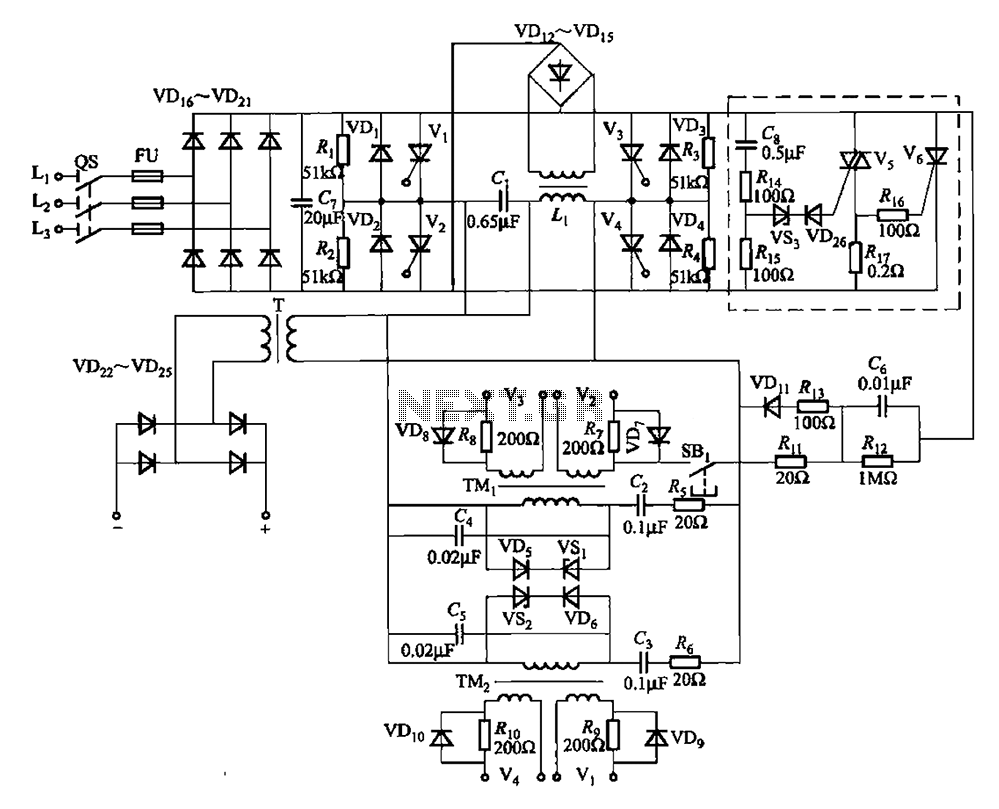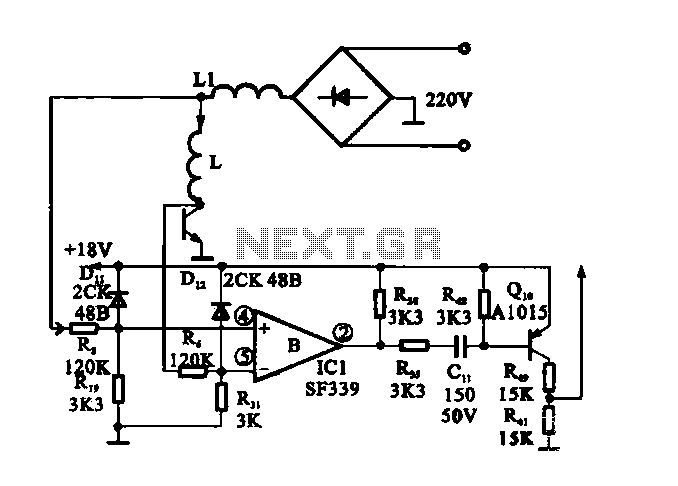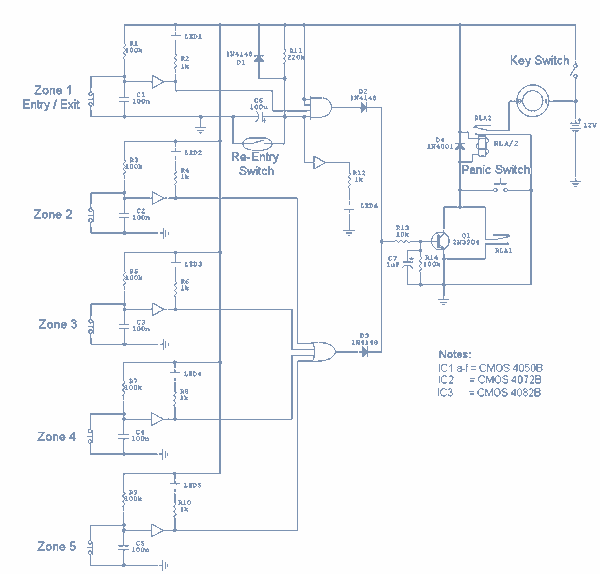
transistors How does this circuit diagram work

R2 controls the charging speed of capacitor C1. At a specific charge level, C1 triggers transistors Q1 and Q2, which release a 9-volt pulse. This pulse generates a clicking sound. The discharge process of the capacitor involves it charging gradually until it reaches a certain threshold, at which point it releases its charge, likely to Q1. The mechanism governing the timing of this discharge and the cessation of the charging process requires further clarification.
In this circuit, resistor R2 is strategically placed in series with capacitor C1 to regulate the charging rate of C1. The time constant of the RC circuit, defined as τ = R2 × C1, determines how quickly C1 charges to approximately 63% of the supply voltage. Once the voltage across C1 reaches a predetermined threshold, it activates the base of transistor Q1. This transistor, in turn, drives transistor Q2, allowing current to flow through the load, producing the desired 9-volt output.
The interaction between the capacitor and the transistors is crucial for the operation of this circuit. Capacitor C1 functions as a timing element, storing energy and releasing it when the voltage surpasses the trigger point for Q1. The discharge occurs rapidly once the threshold is crossed, effectively transitioning from charging to discharging. This transition is facilitated by the inherent characteristics of the transistors, which allow for rapid switching.
The clicking sound produced is a result of the sudden release of energy stored in C1. The frequency of this sound is influenced by the values of R2 and C1, as they dictate the charging and discharging cycles. Understanding the precise moment when C1 discharges and the factors that contribute to the cessation of charging can be explored further by analyzing the circuit’s feedback mechanisms and the characteristics of the transistors involved.
In summary, the circuit's functionality hinges on the interplay between R2, C1, Q1, and Q2. The design effectively utilizes the properties of capacitors and transistors to create a timing mechanism that produces audible output, illustrating a fundamental principle in electronic circuit design.R2 controls how fast C1 charges, and I know that at a certain point C1 will trigger Q1 and Q2 to release the 9 volts (see 2). This 9 volt burst creates the clicking sound. How does the capacitor discharge I imagine that the capacitor will slowly charge up to a point, then let it out (presumably to Q1).
When does it let out Why does it stop it`s "charging" routine to discharge 🔗 External reference
In this circuit, resistor R2 is strategically placed in series with capacitor C1 to regulate the charging rate of C1. The time constant of the RC circuit, defined as τ = R2 × C1, determines how quickly C1 charges to approximately 63% of the supply voltage. Once the voltage across C1 reaches a predetermined threshold, it activates the base of transistor Q1. This transistor, in turn, drives transistor Q2, allowing current to flow through the load, producing the desired 9-volt output.
The interaction between the capacitor and the transistors is crucial for the operation of this circuit. Capacitor C1 functions as a timing element, storing energy and releasing it when the voltage surpasses the trigger point for Q1. The discharge occurs rapidly once the threshold is crossed, effectively transitioning from charging to discharging. This transition is facilitated by the inherent characteristics of the transistors, which allow for rapid switching.
The clicking sound produced is a result of the sudden release of energy stored in C1. The frequency of this sound is influenced by the values of R2 and C1, as they dictate the charging and discharging cycles. Understanding the precise moment when C1 discharges and the factors that contribute to the cessation of charging can be explored further by analyzing the circuit’s feedback mechanisms and the characteristics of the transistors involved.
In summary, the circuit's functionality hinges on the interplay between R2, C1, Q1, and Q2. The design effectively utilizes the properties of capacitors and transistors to create a timing mechanism that produces audible output, illustrating a fundamental principle in electronic circuit design.R2 controls how fast C1 charges, and I know that at a certain point C1 will trigger Q1 and Q2 to release the 9 volts (see 2). This 9 volt burst creates the clicking sound. How does the capacitor discharge I imagine that the capacitor will slowly charge up to a point, then let it out (presumably to Q1).
When does it let out Why does it stop it`s "charging" routine to discharge 🔗 External reference





